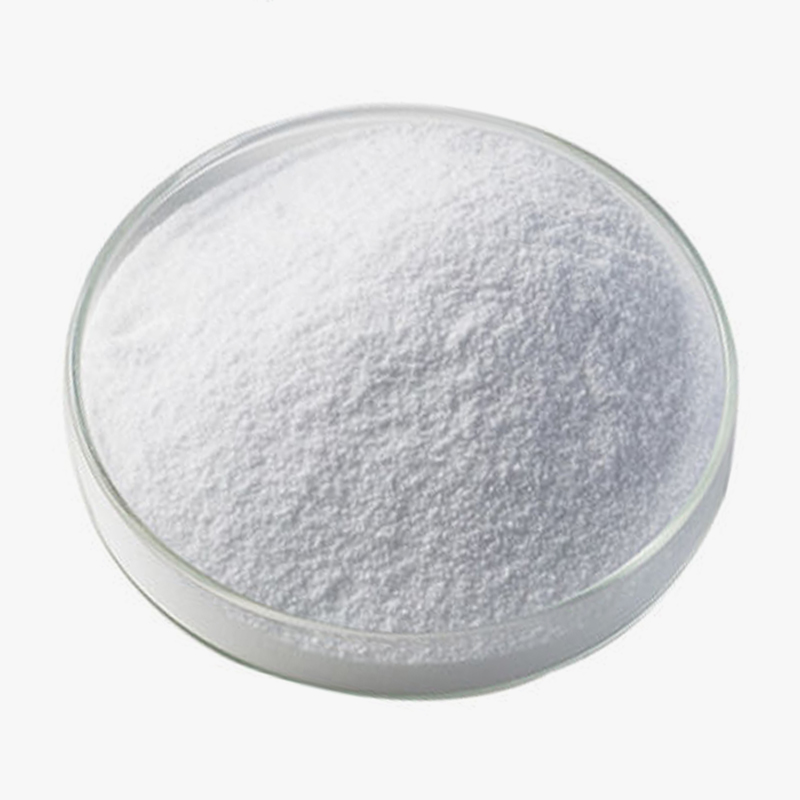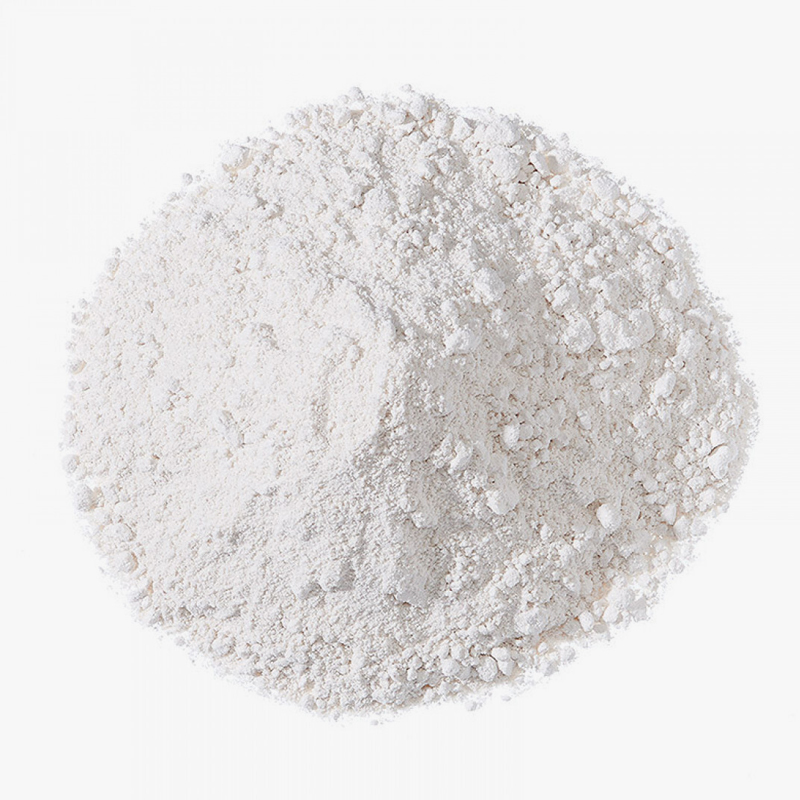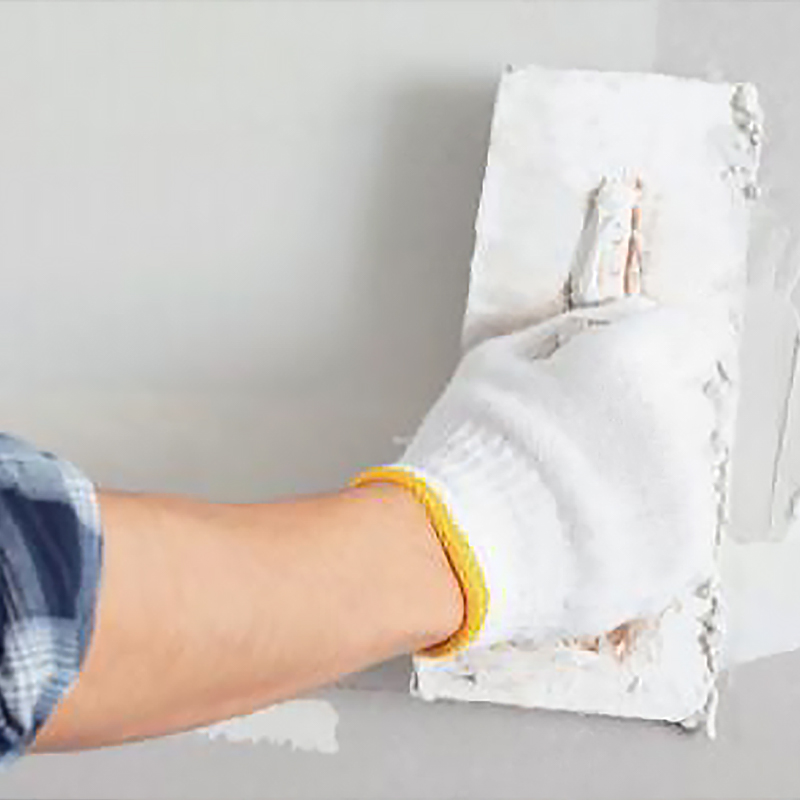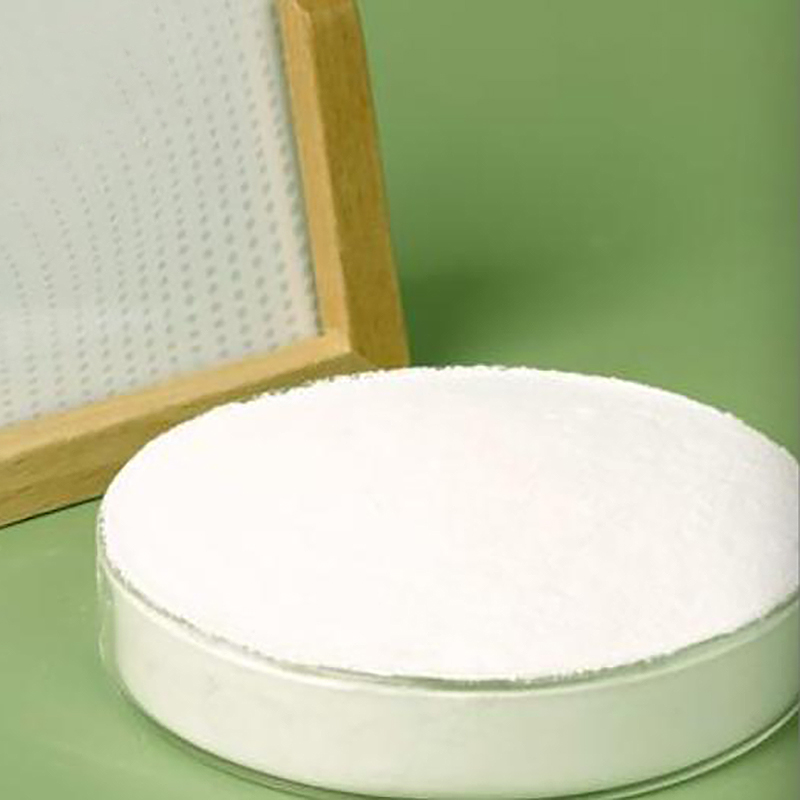Content
- 1 1. Basic Properties and Chemical Structure of Hydroxypropyl Starch Ether
- 2 2. Advantages of Hydroxypropyl Starch Ether in Building Materials
- 3 3. How does hydroxypropyl starch ether improve the performance of building materials?
- 4 4. Storage Guidelines for Hydroxypropyl Starch Ether (HPS)
- 5 5. Frequently Asked Questions (FAQ) about Hydroxypropyl Starch Ether (HPS)
1. Basic Properties and Chemical Structure of Hydroxypropyl Starch Ether
Molecular Structural Characteristics
Hydroxypropyl starch ether (HPS) is an important derivative obtained by chemically modifying natural starch. Its molecular structure has the following typical characteristics:
Basic Backbone Structure:
Retains the basic α-D-pyranose glucose unit skeleton of natural starch
Each glucose unit contains three free hydroxyl groups (C2, C3, and C6 positions)
Modifying Group Introduction:
Hydroxypropyl groups (-CH₂-CHOH-CH₃) are introduced to the hydroxyl groups through an etherification reaction.
Degree of Substitution (DS) is typically controlled within the range of 0.05-0.3. Mono- and di-substituted products may be formed.
Molecular Weight Distribution:
Molecular Weight Range: 1×10⁴-1×10⁶ Da
Molecular weight distribution index (PDI) is typically 5-15.
Physicochemical Properties
Solubility:
Cold water solubility is significantly improved (50-100 times higher than native starch).
Forms a transparent or translucent colloidal solution.
Solubility increases with increasing degree of substitution.
Rheological Properties:
Solution exhibits pseudoplastic fluid characteristics.
Apparent viscosity range: 100-10,000 mPa·s (2% aqueous solution, 25°C).
Viscosity stability is significantly better than native starch.
Thermodynamic Properties:
Gelatinization temperature is reduced to 40-60°C (native starch is 60-75°C).
The thermal decomposition temperature is increased to 280-300°C.
Glass transition temperature (Tg) is reduced by approximately 20-30°C.
Interfacial Properties:
Surface tension: 40-50 mN/m (1% aqueous solution)
Contact angle reduced, wettability significantly improved
Chemical Stability
Acid and Alkali Resistance:
pH Stable Range: 3-11
Susceptible to hydrolysis in strong acidic conditions (pH < 2)
Possible oxidative degradation in strong alkaline conditions (pH > 12)
Biodegradability:
Enzymatic hydrolysis rate reduced to 1/5-1/10 of native starch
Resistance to α-amylase significantly enhanced
Oxidative Stability:
Iodine value reduced to 1-5 g/100 g
Peroxide value significantly reduced
2. Advantages of Hydroxypropyl Starch Ether in Building Materials
Hydroxypropyl Starch Ether (HPS), as a new generation of environmentally friendly building additives, demonstrates outstanding application value in modern building materials. Its unique advantages in cement- and gypsum-based materials are primarily reflected in the following aspects:
- Optimized Construction Performance
Excellent Water Retention
Water retention exceeding 98% (compared to 90-95% for traditional additives)
Moisture release time extended by 2-3 times
Effectively prevents hollowing and cracking caused by premature water absorption in the base layer
Significant Thickening Effect
A 2% addition can increase system viscosity by 300-500%
Shear-thinning properties improve pumpability (reducing pumping resistance by 40%)
Suspension stability improved, with aggregate settling rate <0.5%
Excellent Construction Experience
When opening Extended application time to 30-45 minutes (common products: 15-20 minutes).
Reduced scraping resistance by 35-50%.
Surface smoothness improved by two levels.
- Enhanced Material Performance.
Improved mechanical properties.
Flexural strength increased by 15-25%.
Adhesive strength increased by 30-50% (tile adhesive can reach over 1.5 MPa).
Optimized elastic modulus reduces stress concentration.
Improved durability.
Shrinkage reduced by 40-60%.
Freeze-thaw cycle resistance exceeded 100 times (standard requirement: 50).
Carbonization depth reduced by 30%.
Optimized interface properties.
Compatible with polymer emulsions. Excellent liquid compatibility (no flocculation)
Reduced interfacial contact angle to below 20°
Delayed peak heat of hydration by 2-3 hours
- Significant Economic Benefits
Cost Advantages
Unit dosage is only 1/3-1/2 of cellulose ether
Reduced overall costs by 20-40%
Can reduce the amount of other additives (such as water reducers) by 15-20%
Simplified process
Dissolution time shortened to 5-10 minutes (cellulose ether requires 20-30 minutes)
No agglomeration, excellent dispersibility
Suitable for mechanical spraying (pipe plugging rate <0.1%)
Energy-saving and environmentally friendly
Production energy consumption reduced by 50% % or more
100% biodegradable
Zero VOC emissions
- Performance in Special Application Scenarios
Self-leveling material
Flow retention >95% (30 minutes)
Surface tension adjustment eliminates "cratering" phenomenon
Settlement difference <0.5mm
Insulating mortar
Dry density reduced by 15-20%
Thermal conductivity controlled at 0.06-0.08 W/(m·K)
Wind pressure resistance improved by one level
Repair mortar
Initial and final setting time difference shortened to less than 15 minutes
Micro-expansion rate 0.02-0.05%
- day strength reaches 40% of 28-day strength
3. How does hydroxypropyl starch ether improve the performance of building materials?
- Improved workability of fresh mortar
Moisture control system
Hydroxyl groups (-OH) in the molecule form a hydrogen bond network with water, converting free water into bound water and prolonging evaporation time (water retention >98%).
Slow-release effect ensures continuous hydration of cement and prevents plastic cracking (cracking risk reduced by 60%).
Optimized rheological properties
Long-chain molecules create steric hindrance, increasing viscosity at low shear rates (static viscosity increased by 200-300%).
Shear-thinning properties reduce pumping resistance by 40%, while ensuring immediate recovery of consistency after application.
Suspension stabilization effect
Through charge adsorption, it forms a protective layer on the aggregate surface, preventing sedimentation (settling rate <0.3% after 2 hours).
Works synergistically with cellulose ether to form a three-dimensional network structure, increasing suspension capacity by 50%.
- Enhanced mechanical properties of the hardened body
Microstructural densification
Delayed hydration heat release rate, reducing thermal stress cracking (peak temperature delayed by 3-5 hours).
Regulated Ca(OH)₂ crystallization Directional bridging reduces crystal size by 30-50%.
Interface Strengthening Mechanism: Forms a flexible transition layer at the aggregate-paste interface, increasing bond strength to over 1.5 MPa. Reduces interfacial energy, reducing porosity by 15-20% (increasing the proportion of pores <100 nm).
Stress Buffering Effect: The rotational freedom of the ether bond absorbs microcrack propagation energy, improving impact resistance by 35%. Optimized elastic modulus to 8-10 GPa, matching substrate deformation requirements.
- Improved Durability: Breakthrough in Impermeability: Blocks capillary pores at the 100-500 nm level, reducing the chloride ion diffusion coefficient to 1×10⁻¹²m²/s. Contact angles are reduced to below 25°, achieving hydrophobic modification.
Improved Volume Stability: Suppresses drying shrinkage (28-day drying shrinkage <0.8‰). Shrinkage compensation stabilizes the expansion ratio at 0.02-0.05%.
Environmental Tolerance: Strength loss <5% after freeze-thaw cycles at -20°C (better than GB/T 50082 standard)
Performance retention >90% in alkaline resistance test (pH=13)
- Comparison of material performance improvements
|
Performance Indicators |
Blank Sample |
0.1% HPS Addition |
Improvement |
|
Initial Flow (mm) |
160±5 |
175±3 |
+9% |
|
1-day Compressive Strength (MPa) |
12.5 |
15.8 |
+26% |
|
28-day Shrinkage (‰) |
1.8 |
0.7 |
-61% |
|
Adhesion Strength (MPa) |
0.85 |
1.32 |
+55% |
|
Chloride Ion Penetration (Coulomb) |
2850 |
980 |
-66% |
4. Storage Guidelines for Hydroxypropyl Starch Ether (HPS)
Environmental Control
Temperature and Humidity Management
Storage Temperature: 10-30°C (Optimal 20±5°C)
Relative Humidity: ≤65% (Critical Threshold: 70%)
Temperature Fluctuation: Daily Fluctuation <5°C (Avoid condensation)
Environmental Requirements: Store in a cool, dark place (light intensity <50 lux)
Away from heat sources (distance >2m)
Good Ventilation (Air Change Rate ≥4 times/hour)
Packaging Specifications
Packaging Materials
Inner Layer: Polyethylene Film (Thickness ≥0.1mm)
Outer Layer: Moisture-Proof Kraft Paper Bag/Aluminum Foil Composite Bag
Sealing: Water Vapor Transmission Rate <5g/m²/24h
Specifications
Small Quantity: 5-10kg/bag (Use within 1 month after opening)
Industrial Packaging: 25kg/bag (with reusable seal) Seal)
Block bag storage: Dehumidification equipment is required.
Stacking Requirements
Storage Layout
Wall clearance ≥ 50 cm
Ground clearance ≥ 15 cm (for pallet storage)
Stacking height limit: ≤ 8 layers for bags, ≤ 3 layers for ton bags
First-in, first-out principle
Clear batch identification (QR code management recommended)
Shelf life: 24 months unopened, 6 months after opening
Recommended turnover cycle < 12 months
Special Protective Measures
Pollution Control
Do not store with acids or alkalis (≥ 5 m distance)
Dedicated loading and unloading tools (to avoid metal contamination)
Warehouse dust concentration < 5 mg/m³
Emergency Measures
Wet treatment: Low-temperature drying at 40°C for ≤ 2 hours
Agglomeration treatment: Pass through a 60-mesh sieve before use
Leakage treatment: Adsorb with dry silica gel
Transportation Precautions
Transportation Vehicle: Rainproof truck (humidity <70%)
Avoid mixing with odorous goods
Insulation required for winter transportation (>5°C)
Loading and Unloading Requirements: Mechanical loading and unloading: Drop height <1m
Manual handling: Do not hook or pull packaging
Damage handling: Immediately replace packaging on site
5. Frequently Asked Questions (FAQ) about Hydroxypropyl Starch Ether (HPS)
- What is hydroxypropyl starch ether?
A: Hydroxypropyl starch ether (HPS) is a water-soluble polymer obtained by etherifying natural starch with propylene oxide under alkaline conditions. It exhibits excellent thickening, water-retention, and bonding properties and is widely used in building materials, food, pharmaceuticals, and other fields.
- What are the main functions of HPS in building materials?
A:
Thickening and water-retention: Increases mortar water retention (>95%) and extends open time.
Improves workability: Enhances lubricity and reduces scraping resistance.
Enhances adhesion: Increases bond strength to the substrate (reaching over 1.2 MPa).
Reduces costs: It can partially replace cellulose ethers, saving 20-40% in formulation costs.
- What is the difference between HPS and cellulose ethers (such as HPMC)?
A:
|
Characteristics |
HPS |
HPMC |
|
Raw Materials |
Natural starch modification |
Cellulose derivative |
|
Dissolution rate |
Fast (5-10 minutes) |
Slow (20-30 minutes) |
|
Enzymatic resistance |
Strong |
Weak |
|
Cost |
Low (approximately 1/3 of HPMC) |
High |
|
High temperature resistance |
Slightly weak (recommended <60°C) |
Stronger (can withstand 80°C) |
- What is the recommended dosage of HPS?
Answer:
Tile adhesive: 0.05-0.1%
Plaster mortar: 0.1-0.2%
Self-leveling mortar: 0.02-0.05%
Gypsum-based products: 0.1-0.3%
Note: The optimal dosage must be determined through testing.
- Does HPS affect the strength of mortar?
A: At the appropriate dosage, it will not reduce strength. In fact, it may improve:
Flexural strength: Increased by 10-20% (by optimizing the hydration process).
Adhesive strength: Increased by over 30% (by improving the interfacial structure).
Excessive addition (>0.3%) may cause set retardation and require use with an accelerator.
- How environmentally friendly is HPS?
A:
Biodegradability: Degradation rate >90% in 28 days (superior to synthetic polymers).
Non-toxic and harmless: Meets the GB/T 17219 drinking water standard and emits no formaldehyde.
Carbon emissions: Production energy consumption is only one-fifth that of cellulose ether.

 简体中文
简体中文 English
English русский
русский عربى
عربى Español
Español









